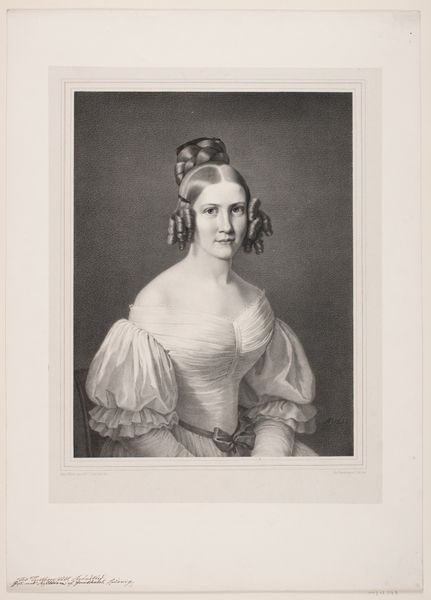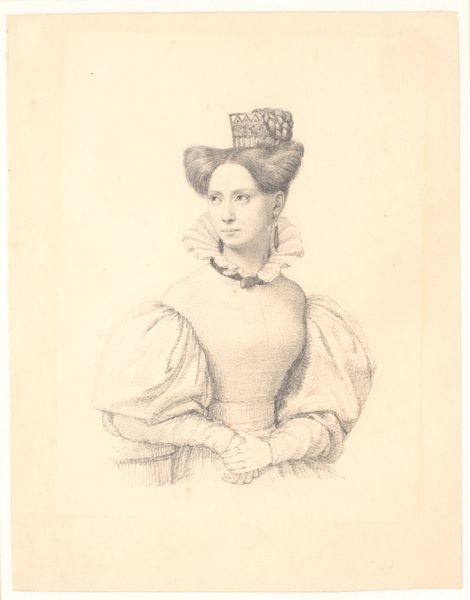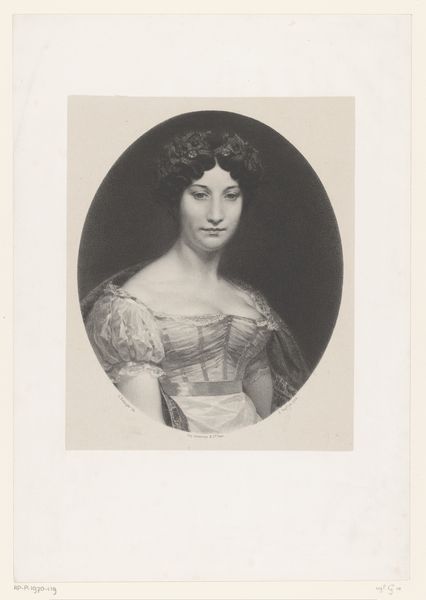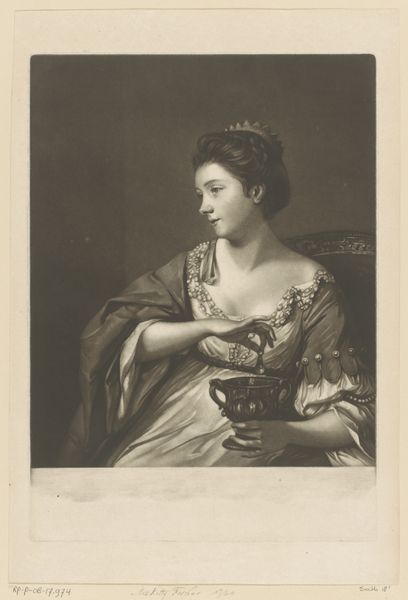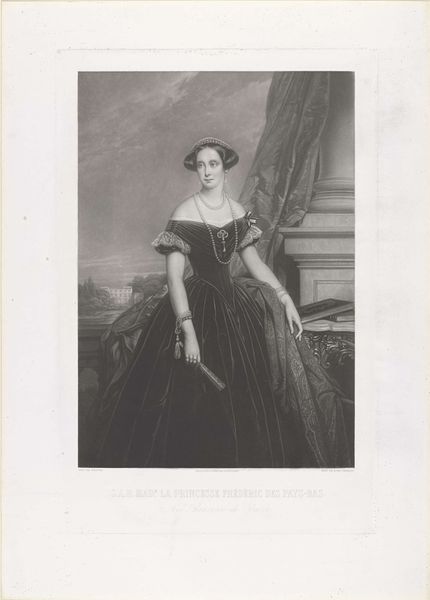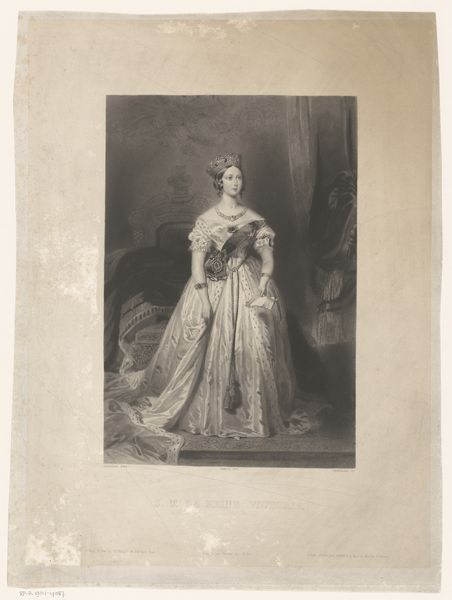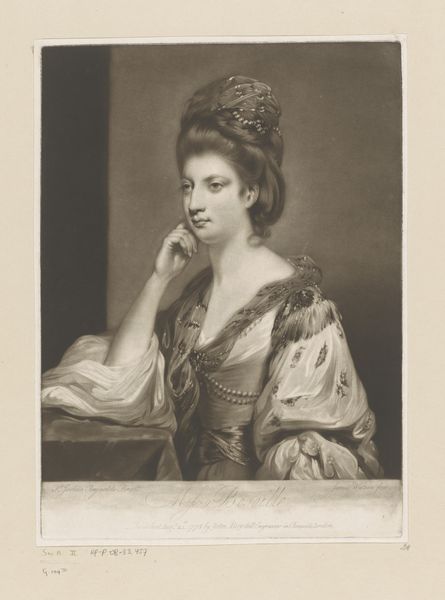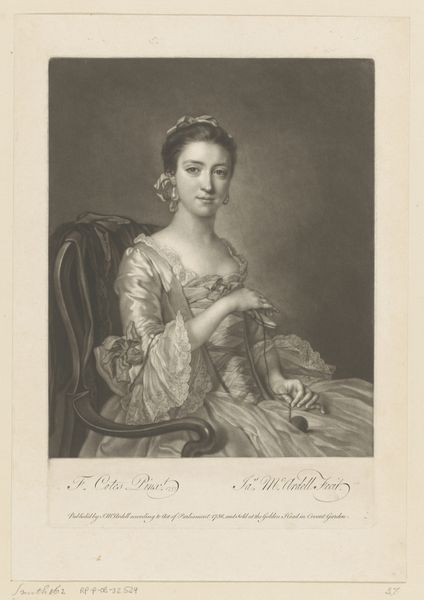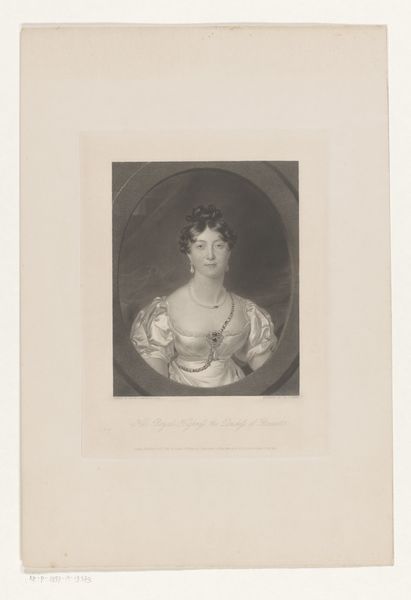
lithograph, print
#
portrait
#
lithograph
# print
#
academic-art
#
realism
Dimensions: 333 mm (height) x 275 mm (width) (billedmaal)
Editor: This lithograph by Carl Müller, created between 1838 and 1848, depicts Elisabeth Hendrine de Neergaard. It feels like a very formal portrait, emphasizing her social standing. What can you tell me about the historical context of portraits like these? Curator: Well, portraits like these served very specific roles within society. How do you think this image was intended to be seen and what power dynamics do you see at play? Editor: I guess it was meant to project an image of respectability and status to the public and solidify her family's social position. Were portraits common forms of propaganda at that time? Curator: Precisely! Think about the rise of the middle class in the 19th century and the emergence of new avenues for social mobility. Art became increasingly important for establishing and showcasing one's status. The print medium here makes the portrait more accessible compared to an oil painting, thereby widening its potential audience. Can you see the implications of that in how the image portrays its subject? Editor: It's interesting how the realism seems to affirm the sitter’s worthiness, like a certificate of their real existence as important. So the lithograph medium is actively involved in communicating this accessiblity in society! Curator: Exactly! And lithography, as a relatively new technology, also played a role in shaping artistic practices and expanding access to art. Consider the sociopolitical function of portraiture – it was never simply about capturing a likeness. Editor: This has given me a completely different perspective on the purpose these portraits had within their society. Thanks! Curator: It's always about viewing art as deeply intertwined with the society that produces and consumes it. The printmaking revolution is such a key consideration for accessing its wider impact on politics and class structures.
Comments
No comments
Be the first to comment and join the conversation on the ultimate creative platform.




